The System Healer is classified as potentially unwanted program. The appearance of System Healer icon your Desktop means that your machine is infected with adware (sometimes named ‘ad-supported’ software), which can show a large amount of pop ups within the Firefox, Google Chrome, IE and Microsoft Edge screen or install various unwanted software on to your computer. So, if you have found System Healer on your computer, then you do not need to wait. Complete the step-by-step guide below to clean your PC from all unwanted software and thereby remove System Healer PUP ASAP.
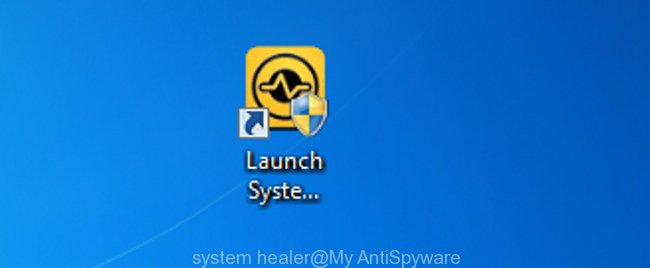
“System Healer” icon on Desktop
It’s not a good idea to have an unwanted program like System Healer on your system. The reason for this is simple, it doing things you don’t know about. The PUP can also be used to collect a wide variety of your data that can be later sold to third parties. You do not know if your home address, account names and passwords are safe. And of course you completely do not know what will happen when you run System Healer.
The adware, that installs System Healer onto your PC, can change the settings of the Chrome, Firefox, Microsoft Internet Explorer and Edge, but often that a harmful software like this can also infect all types of internet browsers by changing their desktop shortcuts. Thus forcing the user each time start the web browser to see an undesired web page.
The guide below explaining steps to uninstall System Healer potentially unwanted program problem. Feel free to use it for removal of the PUP and any adware that may attack FF, Chrome, IE and Edge and other popular browsers. The few simple steps will allow you get rid of any unwanted software and thereby remove System Healer and clean your browser from all unwanted ads.
Remove System Healer from computer (Windows 10, 8, 7, XP)
There are a few methods which can be used to remove System Healer potentially unwanted program. But, not all PUPs such as this program can be completely uninstalled using only manual ways. Most often you’re not able to uninstall any PUP using standard Windows options. In order to remove System Healer potentially unwanted program you need complete a few manual steps and use reliable removal utilities. Most IT security specialists states that Zemana Anti-malware, Malwarebytes or AdwCleaner tools are a right choice. These free programs are able to find and remove System Healer PUP from your PC system and restore your computer settings to normal state.
How to manually get rid of System Healer
If you perform exactly the guidance below you should be able to remove the System Healer potentially unwanted program from your computer and free the Google Chrome, Microsoft Internet Explorer, Firefox and MS Edge browsers of all unwanted ads.
Uninstall System Healer and other PUPs through the Windows Control Panel
We suggest that you begin the PC cleaning process by checking the list of installed software and delete all unknown or suspicious software. This is a very important step, as mentioned above, very often the harmful software such as PUP and browser hijacker infections may be bundled with free applications. Uninstall the unwanted applications can remove the intrusive ads or web-browser redirect.
- If you are using Windows 8, 8.1 or 10 then click Windows button, next click Search. Type “Control panel”and press Enter.
- If you are using Windows XP, Vista, 7, then press “Start” button and press “Control Panel”.
- It will display the Windows Control Panel.
- Further, click “Uninstall a program” under Programs category.
- It will display a list of all programs installed on the computer.
- Scroll through the all list, and remove suspicious and unknown applications. To quickly find the latest installed programs, we recommend sort applications by date.
See more details in the video instructions below.
Disinfect the web-browser’s shortcuts
Unfortunately, the adware can also hijack Windows shortcuts (mostly, your internet browsers shortcuts), so that an ad web-page will be displayed when you open the Mozilla Firefox, Chrome, Microsoft Internet Explorer and Edge or another internet browser.
Right click on the web-browser’s shortcut, click Properties option. On the Shortcut tab, locate the Target field. Click inside, you will see a vertical line – arrow pointer, move it (using -> arrow key on your keyboard) to the right as possible. You will see a text “http://site.address” that has been added here. Remove everything after .exe. An example, for Google Chrome you should remove everything after chrome.exe.

To save changes, click OK . You need to clean all internet browser’s shortcuts. So, repeat this step for the Firefox, Chrome, Internet Explorer and MS Edge.
Delete unwanted Scheduled Tasks
If an unwanted site opens automatically on Windows startup or at equal time intervals, then you need to check the Task Scheduler Library and delete all the tasks which have been created by malicious application.
Press Windows and R keys on your keyboard together. It will display a prompt which titled with Run. In the text field, type “taskschd.msc” (without the quotes) and click OK. Task Scheduler window opens. In the left-hand side, press “Task Scheduler Library”, as shown on the image below.
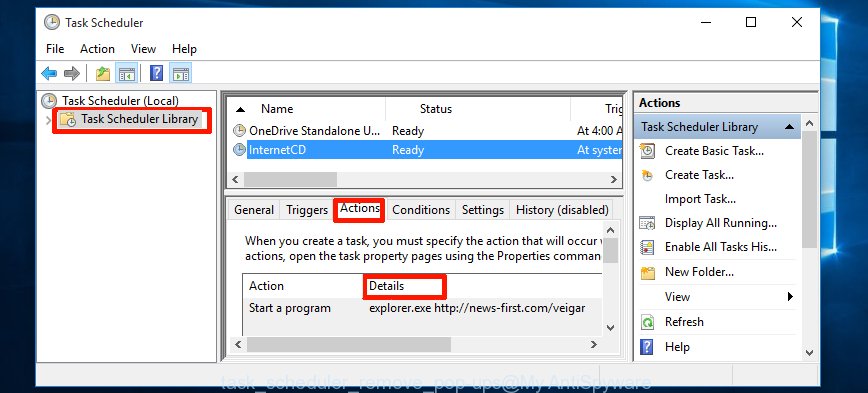
Task scheduler, list of tasks
In the middle part you will see a list of installed tasks. Select the first task, its properties will be display just below automatically. Next, click the Actions tab. Necessary to look at the text which is written under Details. Found something like “explorer.exe http://site.address” or “chrome.exe http://site.address” or “firefox.exe http://site.address”, then you need remove this task. If you are not sure that executes the task, then google it. If it’s a component of the malicious application, then this task also should be removed.
Further click on it with the right mouse button and select Delete as on the image below.

Task scheduler, delete a task
Repeat this step, if you have found a few tasks that have been created by adware. Once is done, close the Task Scheduler window.
How to remove System Healer with free applications
Manual removal is not always as effective as you might think. Often, even the most experienced users can not completely get rid of ad supported software that causes multiple annoying advertisements and popups and installs PUPs such as System Healer. So, we suggest to scan your system for any remaining malicious components with free malware removal programs below.
How to remove System Healer with Zemana Anti-malware
Zemana Anti-malware is a utility which can get rid of ‘ad supported’ software, PUPs, browser hijackers and other malware from your PC easily and for free. Zemana Anti-malware is compatible with most antivirus software. It works under Windows (10 – XP, 32 and 64 bit) and uses minimum of PC resources.
Download Zemana Anti-Malware by clicking on the link below.
164789 downloads
Author: Zemana Ltd
Category: Security tools
Update: July 16, 2019
Once downloading is done, close all applications and windows on your computer. Open a directory in which you saved it. Double-click on the icon that’s called Zemana.AntiMalware.Setup as on the image below.
![]()
When the setup starts, you will see the “Setup wizard” which will help you set up Zemana Anti-Malware on your machine.

Once setup is finished, you will see window as shown on the screen below.

Now click the “Scan” button to begin checking your computer for the System Healer PUP and ad-supported software which made to download and install various unwanted software. A scan can take anywhere from 10 to 30 minutes, depending on the count of files on your machine and the speed of your personal computer. During the scan it will detect all threats exist on your computer.

When it has finished scanning, you may check all items found on your PC. Review the scan results and then press “Next” button.

The Zemana Anti-malware will begin to remove System Healer PUP and other unwanted applications.
How to automatically delete System Healer with Malwarebytes
We recommend using the Malwarebytes Free. You can download and install Malwarebytes to scan for unwanted software and thereby delete System Healer potentially unwanted program from your computer. When installed and updated, the free malware remover will automatically check and detect all threats exist on the personal computer.
Download Malwarebytes by clicking on the link below.
327047 downloads
Author: Malwarebytes
Category: Security tools
Update: April 15, 2020
When the downloading process is complete, close all programs and windows on your personal computer. Open a directory in which you saved it. Double-click on the icon that’s named mb3-setup as shown in the figure below.
![]()
When the installation begins, you will see the “Setup wizard” which will help you install Malwarebytes on your PC.
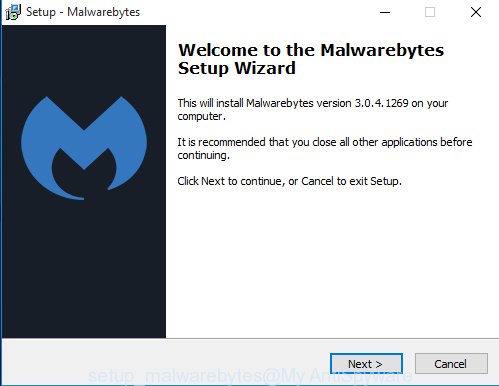
Once installation is done, you will see window as shown in the figure below.
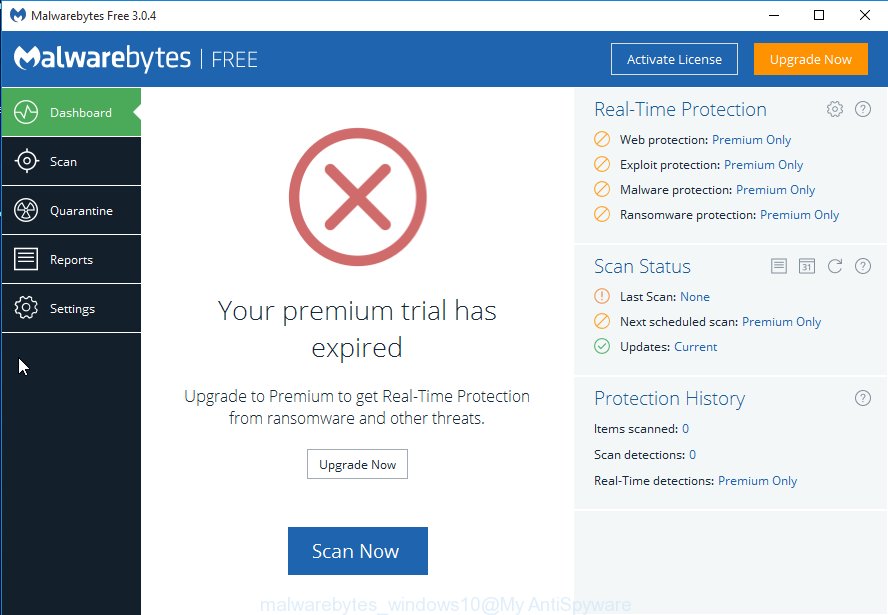
Now click the “Scan Now” button to start checking your PC for the ‘ad supported’ software that causes multiple annoying ads and pop ups and installs potentially unwanted software such as System Healer. This task can take some time, so please be patient. When a malicious software, ad-supported software or potentially unwanted programs are found, the number of the security threats will change accordingly. Wait until the the scanning is complete.
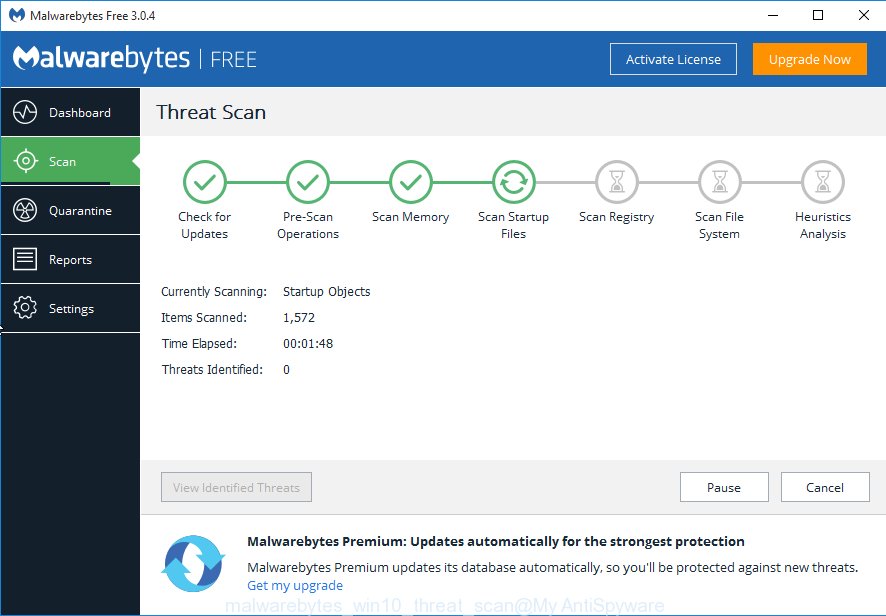
When the scan is finished, the results are displayed in the scan report. Review the results once the tool has complete the system scan. If you think an entry should not be quarantined, then uncheck it. Otherwise, simply click “Quarantine Selected” button.
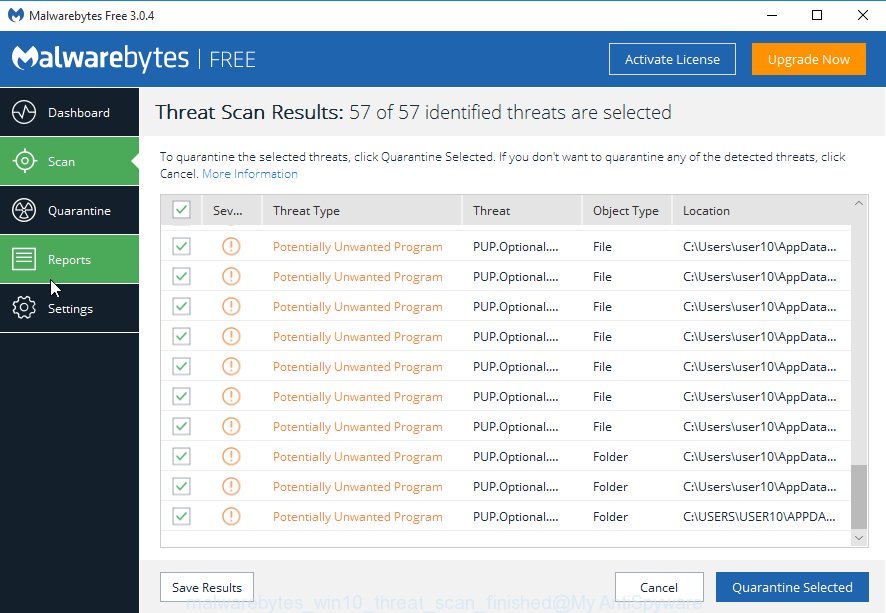
The Malwarebytes will now begin to delete System Healer PUP and adware which can download unwanted programs. Once finished, you may be prompted to reboot your computer.
The following video explains guidance on how to remove browser hijacker infection, adware and other malicious software with Malwarebytes Anti-malware.
Get rid of System Healer from computer with AdwCleaner
If MalwareBytes anti malware or Zemana anti malware cannot remove this potentially unwanted program, then we suggests to use the AdwCleaner. AdwCleaner is a free removal tool for browser hijackers, PUPs, toolbars and ‘ad supported’ software that causes multiple unwanted ads and pop ups and installs PUPs like System Healer.

- Download AdwCleaner from the link below.
AdwCleaner download
225536 downloads
Version: 8.4.1
Author: Xplode, MalwareBytes
Category: Security tools
Update: October 5, 2024
- After the downloading process is finished, double press the AdwCleaner icon. Once this tool is started, press “Scan” button It will scan through the whole personal computer for the System Healer potentially unwanted program and other unwanted software. This task can take quite a while, so please be patient. While the utility is checking, you can see how many objects it has identified either as being malware.
- When that process is finished, it will show a list of all threats detected by this tool. In order to remove all threats, simply click “Clean” button. It will open a prompt, click “OK”.
These few simple steps are shown in detail in the following video guide.
How to stay safe online
Use an ad blocking utility like AdGuard will protect you from malicious ads and content. Moreover, you can find that the AdGuard have an option to protect your privacy and stop phishing and spam web pages. Additionally, adblocker programs will help you to avoid unwanted pop up ads and unverified links that also a good way to stay safe online.
Download AdGuard application from the following link.
26840 downloads
Version: 6.4
Author: © Adguard
Category: Security tools
Update: November 15, 2018
Once the downloading process is finished, run the downloaded file. You will see the “Setup Wizard” screen as on the image below.

Follow the prompts. After the setup is done, you will see a window as on the image below.

You can click “Skip” to close the installation program and use the default settings, or click “Get Started” button to see an quick tutorial which will allow you get to know AdGuard better.
In most cases, the default settings are enough and you don’t need to change anything. Each time, when you launch your machine, AdGuard will start automatically and block pop ups, as well as other malicious or misleading web sites. For an overview of all the features of the application, or to change its settings you can simply double-click on the AdGuard icon, which is located on your desktop.
Final words
Once you’ve done the step by step tutorial outlined above, your machine should be free from malicious software, System Healer and other unwanted applications. The Google Chrome, Firefox, Internet Explorer and Microsoft Edge will no longer reroute you to various intrusive web sites. Unfortunately, if the steps does not help you, then you have caught a new ‘ad supported’ software, and then the best way – ask for help in our Spyware/Malware removal forum.




















